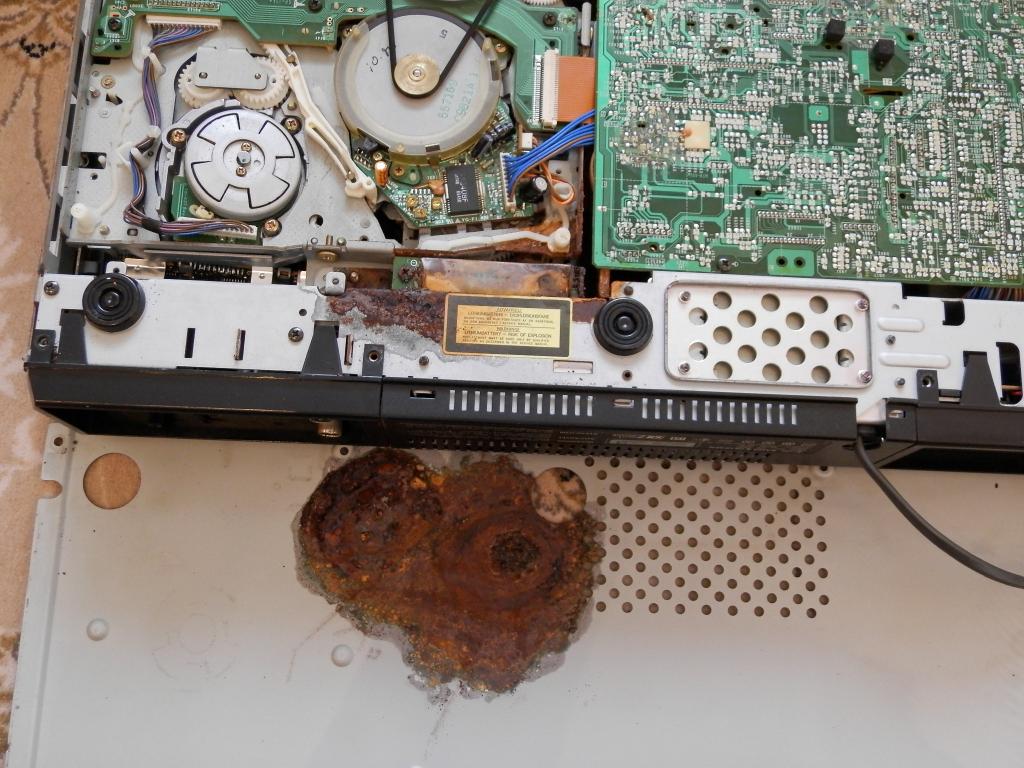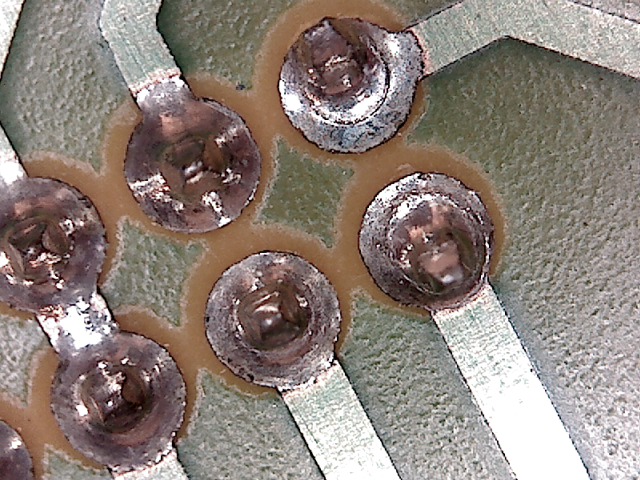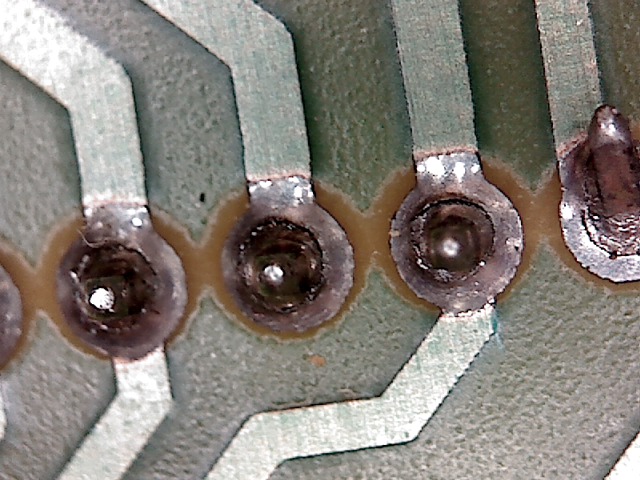Forum Replies Created
- AuthorPosts
-
Siemens, Philips, Intel are OK.
ATMEL is not ok. To modern…
It must be a standard 80C32 CPU, not with extra additional ram… just 256 internal Bytes. No additional Eprom or ROM or extended RAM beyond 256bytes. No extra Timer.
Not Atmel 80C32x2 because faster…
I prefer Philips, just because of asian counterfeits… intel and Siemens are more expensive or some people get more of your money for nothing.
Martin No.2
BL8000: the standby transformer T2 has something like 2W available. Usually this transformer is very, very often defect of heat… and the power board is very rare. Usually found for 200,- replacement… if found. And used ones are not in good condition…
If the BT needs 5V 0,8A the transformer will not survive some hours… the transformer can supply 150mA in total. I had to replace last month a dozen of them … and new transformers that fit to the board are very rare and hard to get… out of production for 15 years.
There is plenty of room inside the BL8000 to install a quite normal PSU switch power supply in the upper loudspeaker area…
This one here was burning after 20 years…
Hi,
taking fotos is a very good idea. Documenting with fotos before and after the operation… i do it also before beginning a difficult repair or a unit without documents…
Did you pull any connectors, plugs or something like that? Is it possible to assemble them the other way round? Or shift it by a pin…? Or forget a connector? Pins can break in the solder pad…
Blown fuse?
Disconnect the repaired drive and remove it, a center should also run without it and start again.
Good luck!
Martin
Hallo Ernst,
das BC9300 hat dieselbe Radio Platine wie BS2500 und Overtüre. Baugleich jeweils pro Empfangsland…Diese Platinen habe ich dutzendweise instandgesetzt, es sind immer wieder dieselben Kandidaten: Elkos. Nach 20 Jahren ist einfach Schluß und das wird auch mit 30 Jahren keinesfalls besser.
Als besonders auffällig habe ich die kleinen 47uf in Miniaturgröße empfunden, aber das ist schlicht egal. Tausche alle, man kann nicht genau sagen welcher Kandidat defekt ist. B&O hat für jeden einzelnen Schaltkreis/Baugruppe jeweils einen Ladewiderstand und einen dieser 47uF Elkos verwendet. Fällt er aus, zieht er jeweils eine Baugruppe ins Nirwana.
Gruß
Martin
Cleaning is a good idea.
But dont use hard plastic tubes… a brush is better.
Much besser is compressed air… do it outside 😉
If there were exploded caps, then there would be no function at all, the TV would be dead.
The problem is: a almost dead cap looks quite like a new one, only if it leaks it can be identified or if it is blown up/deformed.
Caps dont like heat, so most of them die in hot areas and dirty areas… when they dont get cooling air/ventilation.
This hardware is already 20 years old, most units i repair are 30-50 years, not only B&O, also controller/relais in very old cars, fuel injection or controls . I usually take a board, clean it and replace all caps on this board. I dont measure them, testing takes time and is not 100% safe in circuit. I replace them all. Since i do not only one unit or whatever, i restore always 4-10 in series, using 1 test unit for testing the boards. I do only hardware i have for testing… or if it is very simple to find the defect. Starting with the Power supply is usually the best way to start…
Buying caps is not easy. There is not the best cap, it’s always a compromise. The most longliving caps are MKS WIMA, i replace almost every electrolyth cap up to 1uF with a WIMA or even with the new X5R or X7R SMD parts.
The bigger caps come from Panasonic, FC or FR series. They are not easy to get, right now they are very hard to buy… but 10.000h lifetime at 105 degrees are good material.
The problem is: you need a very huge sortiment of caps of every size and dimension to repair them in a usefull time. I think, i have around 200kg and around 25.000 caps in storage right now… just for my retirement.
Thanks a lot Martin ! That is helpfull. If I understand correctly, it can explode if I power it again ?
Do you have and idea of the root cause of this problem ? Is the moving of the TV a probable one ?
S.
Transport?
No big TV or heavy electronics likes a transport. But if you take care not to smash it on the truck… no problem.
But this picture is typical for a bad power supply…
Switch it on? NO! First the caps die, then the transistors and chips… A cap can easy be replaced, a dead chip is a expensive desaster.
TV Tecci? It’s possible to learn it 😉
Looks very good for a repair! 🙂
It would also cover the defekt black pads, often broken and silver shiny…
It is not 100% original, but 99% acceptable. I would like it … and much better than a 100$ for a single glass door.
Dead?
No!
But close to it… not far away. Maybe 10 minutes? And bang!
The white lines are the runback of the cathode beam… and they should never be visible in standard mode…
Do not switch it on. It needs urgent repair of caps… power supply and deflection are not OK.
It still can be repaired, it just needs an old retired tv tecci and some parts…
Martin
The beograms are very old hardware, they become lower and lower… quite normal, it can be adjusted easily.
And a new belt pulls on the left side additionally, lowering the left side of the platter.
There are 3 springs on the subframe. You only need a screwdriver and a good eye for adjustments.
Just remove the white platter cover and you have access to the springs. It is not necessary to open the deck like on the picture… just to show the springs…
Martin No.2
Confirmed, there is a lithium cell inside the cpu board. It is a CR2450 cell with pins.
Replacement is necessary, otherwise the cell can leak and destroy the board. The brown stuff on the battery is acid… it also can burn (seen in several VX5000…)
After the replacement the cpu needs a reset and a “clear CMOS” service. Without this procedure the offset of the FM counter may be wrong, the frequencies of the stations will be wrong and there will be stations you cannot reprogram or delete, this can also be a timer function… switching on or off, recording things…
For this it is necessary to start in service mode.
You have the service manual?
Is the MMC ok?
Sometimes the stylus is broken and the needle is bent upwards or even complete missing… then the MMC case slides over the record…
Clean the manual switch, it’s oxide and old grease … L … R … Auto
Use the switch, many, many times…
Machen wir’s mal einfach.
Das meiste Volumen muss vorne mittig und links/rechts vom Fernseher rauskommen.
Bei 10m Abstand… ok, das ist schon eine echte Ansage, macht auch der Beolab 2 Sinn.
Bei den hinteren Surround wird in aller Regel sehr viel weniger Volumen verlangt, egal ob 5.1 oder sogar 7.1… bei 7.1 wird es noch weniger pro Lautsprecher.
Bei einem Sofa an der Wand wird der 5.1 Effekt sehr stark beschränkt. Der Lautsprecher ist zu nah und plärrt einem dann auf kürzeste Distanz vorlaut ins Ohr. Das kommt nicht gut.
Das Sofa sollte schon etwas Abstand zur Wand haben, Wände machen unschöne Echos wenn zu nah, es wird dann schrill … mich irritiert das gewaltig, der Raumeffekt leidet erheblich.
Theoretisch sollte das Sofa ja in der Raum Mitte stehen… aber wer hat schon ein 20m Kino zur Verfügung? Mach also etwas Abstand zur Wand, 1-2m sollten es dann schon sein. Die Laufzeiten kannst du ja problemlos programmieren, richtig?
Die BL2500 sind in einem so großen Raum überfordert. Ich würde sie auch einzeln aufgebaut optisch nicht wertschätzen, als einfaches “L” sind sie ….hmmmm, fehlplatziert. Sie sind mit einer Overture kombiniert sehr dekorativ, einzeln aber nicht so der Hit.
Mit 4000ern auf einem Regal oder auf einer dekorativen Säule/Standfuß werden sie genug bringen, es wird auch optisch nicht zu wuchtig aussehen. Das kommt jetzt dann etwas auf die restliche Einrichtung an. Mit den 4000ern könnte man auch das “Höhenproblem” der hinteren Lautsprecher lösen. Stehen sie auf dem Boden, merkt man irgendwie dass da was nicht stimmt… hört sich an wie aus einem Grab. Nicht gut. Es sollte mehr auf Ohrhöhe sein, wie gesagt: 4000er auf einem Regal oder Ständer. Der Mittelpunkt des Austritts sollte in etwa bei 1,2m über Grund sein. Die BL8000 machen das schon richtig, die BL6000 sind dann etwas zu tief…
Wenn’s ein richtiger Kino Raum ist, wo wenig rumsteht: ok, 4x BL8000 sieht dann schon was gleich, das kommt gut rüber, optisch wie auch akustisch. Allerdings sind die hinteren Kanäle vom Volumen für die BL8000 eher sowas wie Unterforderung. Wenn man etwas dran sparen wollte, Platzbedarf usw… die BL6000 reichen da auch. Wobei die BL6000 vom Volumen/Bass eher der BL4000 etwas unterlegen ist, die BL6000 habe ich volumenmäßig immer eher als “dünn” in Erinnerung. Ich empfinde die 6000er als nützliche Helfer bei einem guten Fernseher mit ordentlichem Center im normalen Wohnzimmer…
Ich würde von der Einfachheit her auch 5.1 vorziehen, mit 7.1 wird es nicht so viel besser. Das 7.1 kann man machen, wenn der Raum wirklich sehr groß wird, also weit jenseits der 10m… aber dann muß man wieder über die BL8000 nachdenken, ob man dann nicht gemachte Pentas wählt.
Das wären meine 5 Cent dazu…
Martin
I think the BG4000 had a muting system.
The muting system closes the loop to ground, so there is no noise.
When the needle plays, the loop is opened and there should be sound.
So it looks like a wrong DC level on the sound channels…
Yes, it could be a broken ground connector or track on a board, broken solders.
When all sources have this problem, it is inside the (pre)-amp.
If possible and if the preamp can be disconnected: apply a different source carefully to the amp. If gone, it’s the preamp. If not, the amp.
If it is more a 50Hz humming sound: defect power source, dead caps.
Die erste Version von der BL4000 hatte keine ICE-Technik drin. Spielt aber auch keine wesentliche Rolle.
Was man im Video sieht, ist die pillepalle easy Version. Da pappt nix, da reisst nix, die Platinen sind nicht grün verätzt … des is a bisserle leicht bappig und sonst nix.
Wenn’s mal so ausschaut, dann ist das ein ganz anderer Level…
Oder Gummiriemen von Laufwerken so rauskommen… das ist dann nur noch eklig…
Und trotzdem funktioniert alles wieder wie neu. Das ist alles wieder sauber zu bekommen… es ist nur Arbeit. Viele Stunden vor dem Fernseher so nebenbei… dann geht das.
The LM324 is just an opamp … no power at all…
The L272 is controlling the motor, that is the power source.
Check the axles of the 2 spindles. Clean it… the grease is very sticky after this time. Like glue… check it by hand, you can turn it or not.
Disassemble the C-Clip on the top of the axles, then you can pull the wheels. Be carefull not to break it or loose it…
Ähnliches gilt auch für die BL2500 bezüglich Schaumstoff… schwarzer Baaaz, alles bapt, alles dreckig…
Allerdings ist die gute Nachricht: man muss nichts mehr von dem Schaum reinstecken, sie klingt ohne sogar besser.
Die schlechte Nachricht ist nur: es kann ein Haufen Arbeit sein, diesen Dreck rauszubekommen, denn er ist ätzend und zerstört Leiterbahnen.
- AuthorPosts










